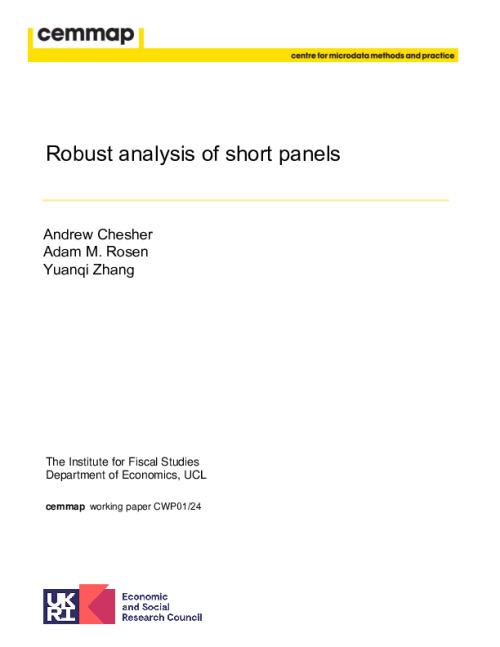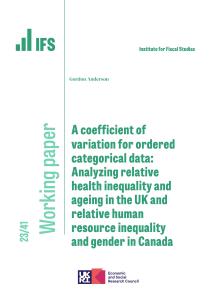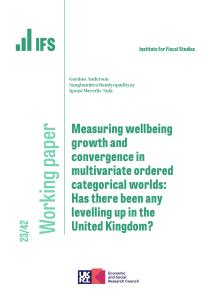Downloads

CWP0124-Robust-analysis-of-short-panels.pdf
PDF | 782.29 KB
Many structural econometric models include latent variables on whose probability distributions one may wish to place minimal restrictions. Leading examples in panel data models are individual-specific variables sometimes treated as “fixed effects” and, in dynamic models, initial conditions. This paper presents a generally applicable method for characterizing sharp identified sets when models place no restrictions on the probability distribution of certain latent variables and no restrictions on their covariation with other variables. In our analysis latent variables on which restrictions are undesirable are removed, leading to econometric analysis robust to misspecification of restrictions on their distributions which are commonplace in the applied panel data literature. Endogenous explanatory variables are easily accommodated. Examples of application to some static and dynamic binary, ordered and multiple discrete choice and censored panel data models are presented.
Authors

Research Fellow University College London
Andrew is the Director of the ESRC Centre for Microdata Methods and Practice (cemmap) and Professor of Economics and Economic Measurement at UCL.

Research Fellow Duke University
Adam is a Research Fellow associated with the Cemmap at the IFS and UCL and an Associate Professor of Economics at Duke University.
PhD Scholar University College London
Working Paper details
- DOI
- 10.47004/wp.cem.2024.0124
- Publisher
- Institute for Fiscal Studies
Suggested citation
A, Chesher and A, Rosen and Y, Zhang. (2024). Robust analysis of short panels. CWP01/24. London: Institute for Fiscal Studies. Available at: https://ifs.org.uk/publications/robust-analysis-short-panels (accessed: 27 April 2024).
More from IFS
Understand this issue

Levelling Up: Is inequality between places Britain’s biggest problem?
16 August 2023

Government spending has long been targeted at the poorest in our society
5 June 2023

IFS response to government cost of living support package
Initial analysis of the Chancellor's statement on the cost of living crisis.
26 May 2022
Policy analysis

ABC of SV: Limited Information Likelihood Inference in Stochastic Volatility Jump-Diffusion Models
We develop novel methods for estimation and filtering of continuous-time models with stochastic volatility and jumps using so-called Approximate Bayesian Compu- tation which build likelihoods based on limited information.
12 August 2014

The IFS Scottish Budget Report – 2024–25
22 February 2024

Scottish Budget: Tax and spending in 2024–25
6 February 2024
Academic research

Understanding Society: minimising selection biases in data collection using mobile apps
2 February 2024

A coefficient of variation for ordered categorical data: Analyzing relative health inequality and ageing in the UK and relative human resource inequality and gender in Canada
21 December 2023

Measuring wellbeing growth and convergence in multivariate ordered categorical worlds: Has there been any levelling up in the United Kingdom?
21 December 2023